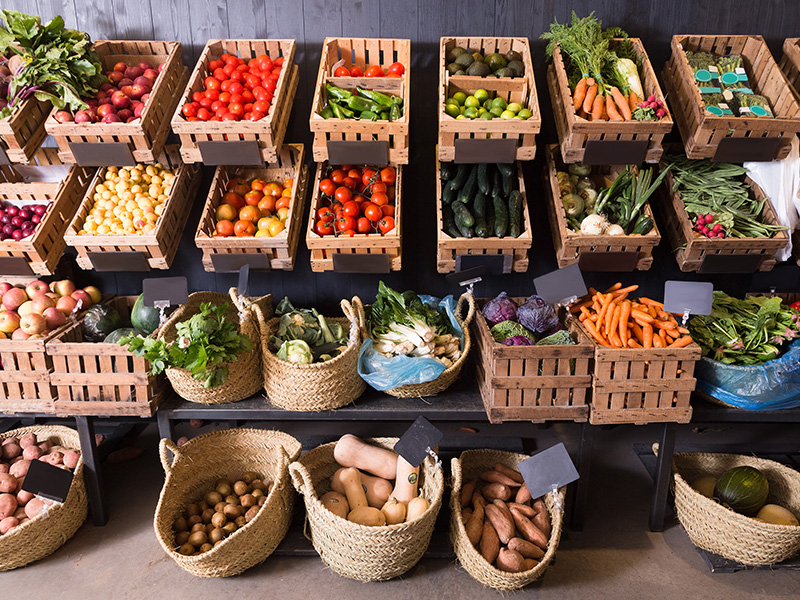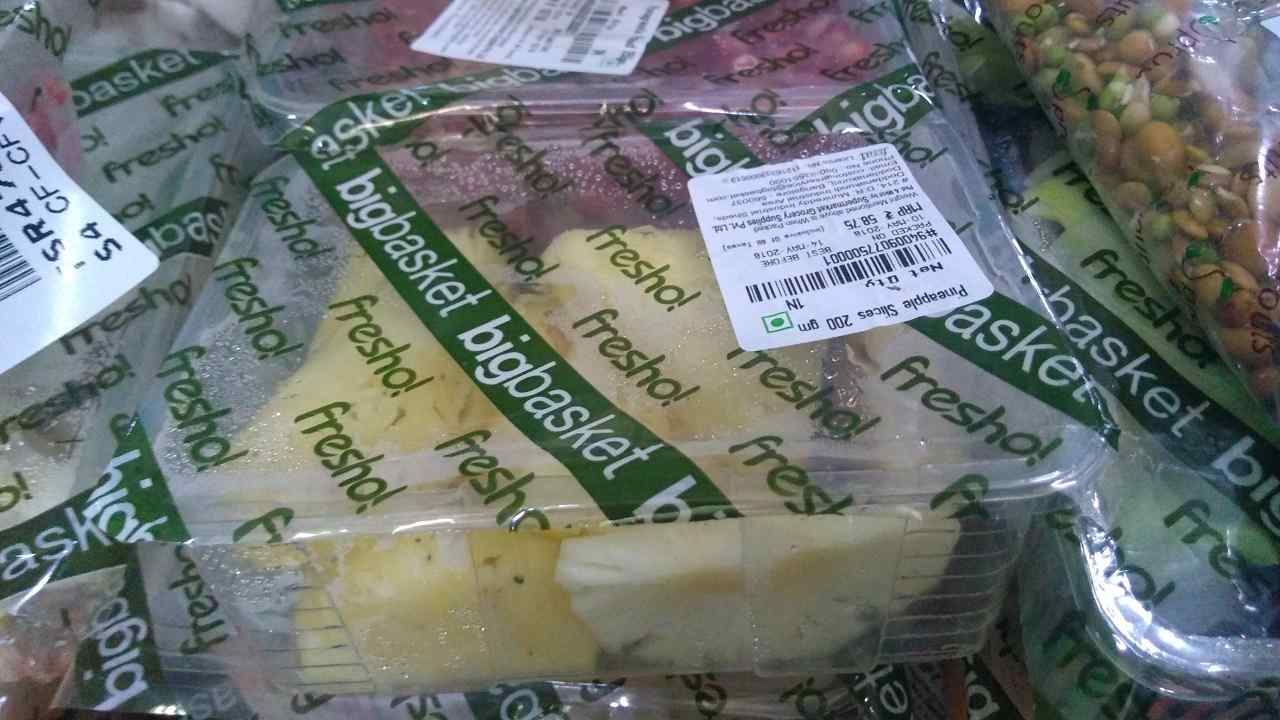From farms to homes: Inside online grocery startup BigBasket
India's fast-growing young population is opting for online shopping, not just for clothes but also food items, giving online retailers a huge market to tap
 Image: Shutterstock
Image: Shutterstock
 Walmart's plans to expand in India, which includes the recent majority stake acquisition in Flipkart, highlights the potential of India's online retail and grocery market. Recent developments are an indication of gradual but definite changes in shopping patterns in future. For instance, Grofers is in talks to raise more capital, Amazon is leaving no stone unturned to up its ante through Amazon Pantry and Amazon Now. BigBasket, which recently raised USD 300 million, is as per media reports in talks to raise another USD 300-500 million. To explore the nuts and bolts of the online grocery business, Moneycontrol visited BigBasket's warehouse to get a sneak peek into the process:
Walmart's plans to expand in India, which includes the recent majority stake acquisition in Flipkart, highlights the potential of India's online retail and grocery market. Recent developments are an indication of gradual but definite changes in shopping patterns in future. For instance, Grofers is in talks to raise more capital, Amazon is leaving no stone unturned to up its ante through Amazon Pantry and Amazon Now. BigBasket, which recently raised USD 300 million, is as per media reports in talks to raise another USD 300-500 million. To explore the nuts and bolts of the online grocery business, Moneycontrol visited BigBasket's warehouse to get a sneak peek into the process: BigBasket's Mahadevapura distribution centre is its oldest and it is spread across 72,000 square feet. BigBasket procures products from three sources – farmers, vendors and national sourcing. Farmers deliver their produce like beans, cauliflower, capsicum, ladyfingers at the collection centre nearest to their village.
BigBasket's Mahadevapura distribution centre is its oldest and it is spread across 72,000 square feet. BigBasket procures products from three sources – farmers, vendors and national sourcing. Farmers deliver their produce like beans, cauliflower, capsicum, ladyfingers at the collection centre nearest to their village. Vendors mostly provide exotic fruits and vegetables. National sourcing is done for articles such as onion and potato. The Mahadevapura warehouse gets around 70 percent of its SKUs (stock keeping units) from the collection centres, about 20 percent comes from the vendors and the rest 10 percent comes from national sourcing. Zonal business head Dipayan Bhattacharjee says that the company pays off the farmers within 24 hours of procuring the produce.
Vendors mostly provide exotic fruits and vegetables. National sourcing is done for articles such as onion and potato. The Mahadevapura warehouse gets around 70 percent of its SKUs (stock keeping units) from the collection centres, about 20 percent comes from the vendors and the rest 10 percent comes from national sourcing. Zonal business head Dipayan Bhattacharjee says that the company pays off the farmers within 24 hours of procuring the produce. Items are first washed, diced and then doused with permitted chemicals such as citric acid or tartaric acid to increase their life.
Items are first washed, diced and then doused with permitted chemicals such as citric acid or tartaric acid to increase their life. The demand for cut and diced fruits and vegetables is growing especially in the metros where people are ready to pay a little premium to get ready to cook or consume fruits and vegetables. Fruits and vegetables manager Ashok Kumar S said: “We sell around 3,500 packets or 1400 kg of cut fruits and vegetables daily. Some of the highest selling items are peeled pomegranates, garlic, sliced cauliflower etc.”
The demand for cut and diced fruits and vegetables is growing especially in the metros where people are ready to pay a little premium to get ready to cook or consume fruits and vegetables. Fruits and vegetables manager Ashok Kumar S said: “We sell around 3,500 packets or 1400 kg of cut fruits and vegetables daily. Some of the highest selling items are peeled pomegranates, garlic, sliced cauliflower etc.” He adds, “Which chemical will be added to which fruit or vegetable and in what quantity is pre-defined. It increases the shelf life of the product by five days.”
He adds, “Which chemical will be added to which fruit or vegetable and in what quantity is pre-defined. It increases the shelf life of the product by five days.” For every fruit or vegetable which is to be sold whole, the packaging and labelling is done. Almost 220 SKU of fresh fruit and vegetables are sold out of this warehouse. The most selling items include onion tomato and potato.
For every fruit or vegetable which is to be sold whole, the packaging and labelling is done. Almost 220 SKU of fresh fruit and vegetables are sold out of this warehouse. The most selling items include onion tomato and potato. Karnataka has four collection centres – Malur, Chickabalapura, Mysore and Gokak. Trucks from these collection centres aggregate the produce at the distribution centre or the warehouse at Mahadevapura. The produce filled crates are tagged to define their freshness.
Karnataka has four collection centres – Malur, Chickabalapura, Mysore and Gokak. Trucks from these collection centres aggregate the produce at the distribution centre or the warehouse at Mahadevapura. The produce filled crates are tagged to define their freshness. After packaging, all the boxes are passed through a metal detector to ensure that no chunk of metal gets left inside any of the boxes.
After packaging, all the boxes are passed through a metal detector to ensure that no chunk of metal gets left inside any of the boxes. And before delivery, there's yet another process — RFID — Radio frequency identification. “It is for crate traceability from the warehouse to the house of the customer,” says Kumar. After all of this, the articles are collected in a crate and taken for dispatch from where the trucks can take them to the delivery hubs.
And before delivery, there's yet another process — RFID — Radio frequency identification. “It is for crate traceability from the warehouse to the house of the customer,” says Kumar. After all of this, the articles are collected in a crate and taken for dispatch from where the trucks can take them to the delivery hubs. Original Source: https://www.moneycontrol.com/news/photos/business/startup/from-farms-to-homes-inside-online-grocery-startup-bigbaskets-warehouse-2574361.html